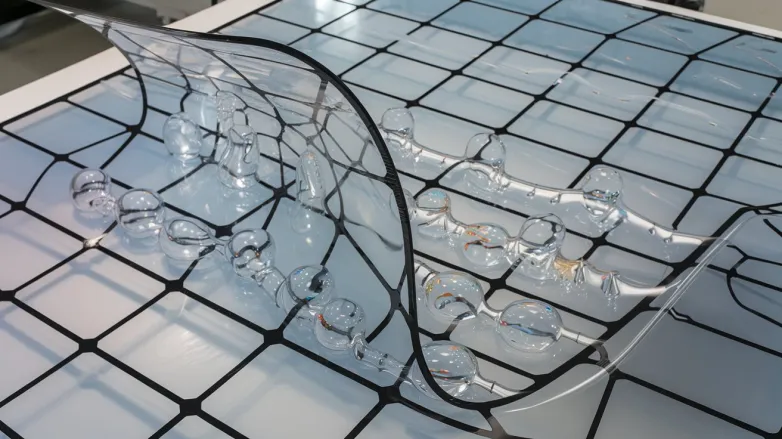Flexible Perovskite Solar Cells Revolutionize Polycarbonate Applications
- Innovative flexible perovskite solar cells achieve 13% efficiency on polycarbonate films, revolutionizing energy solutions for smart tech, packaging, and wearables with enhanced durability and low-cost manufacturing potential.

Researchers from various institutions, including CHOSE at Tor Vergata University, have successfully developed flexible perovskite solar cells (PSCs) on polycarbonate films. By creating a new planarizing layer that significantly reduces surface roughness and enhances solvent resistance, the team achieved a power conversion efficiency of 13.0%. This new method also improved the water vapor transmission rate, making the substrate more suitable for solar cell technology, while maintaining good durability and flexibility.
The PSCs feature a transparent customized ITO electrode and have shown to retain 80% of their initial efficiency after extensive shelf-life testing. This innovation not only highlights the potential for flexible solar cells in everyday polycarbonate applications but also paves the way for compatibility with low-cost manufacturing processes. The developed technology could benefit various optoelectronic devices, expanding the market for energy harvesting solutions and applications in smart technology, packaging, and wearable electronics.
How do flexible perovskite solar cells enhance efficiency and durability for future applications?
Enhanced Efficiency and Durability of Flexible Perovskite Solar Cells
- Material Innovation: The use of polycarbonate films as substrates in flexible perovskite solar cells (PSCs) allows for lightweight and durable applications, which is crucial in expanding the use of solar technology beyond traditional rigid formats.
- Improved Surface Characteristics: The introduction of a new planarizing layer minimizes surface roughness, which is essential in improving charge carrier mobility, ultimately leading to higher power conversion efficiencies.
- Enhanced Solvent Resistance: The new methodology employs materials that show increased resistance to solvents, which can improve the longevity and reliability of the cells when exposed to various environmental factors.
- Water Vapor Transmission Rate: By optimizing the water vapor transmission rate, the new PSCs are better suited for deployment in outdoor environments, as they minimize moisture penetration that can degrade cell performance.
- Retained Efficiency: Retaining 80% of initial efficiency even after extensive shelf-life testing underscores the reliability of these flexible solar cells, making them a promising option for long-term applications.
- Cost-Effective Manufacturing: The compatibility of this technology with low-cost manufacturing processes can lead to broader adoption in various industries, democratizing access to solar energy solutions.
- Diverse Applications: The flexibility of these PSCs opens up new avenues for integration into various devices, such as:
- Wearable Electronics: Lightweight and bendable solar cells can power devices like smartwatches or fitness trackers.
- Smart Packaging: Solar-powered packaging solutions can enable sensors for monitoring conditions, enhancing product safety and traceability.
- Building-Integrated Photovoltaics (BIPV): The aesthetic flexibility of PSCs allows for integration into architectural designs, transforming building facades into energy-generating entities.
- Environmental Impact: The development of durable flexible PSCs potentially reduces reliance on fossil fuels, aligning with global sustainability goals and supporting the transition to renewable energy.
- Research and Development Landscape: Continued research on improving the materials and processes behind flexible PSCs could yield even higher efficiencies and longer lifespans, contributing to the evolution of solar technology.
- Scalability: The technology demonstrated can be scaled up for industrial production, which is critical for meeting the growing demand for renewable energy sources in a rapidly changing energy landscape.
- Interdisciplinary Collaborations: The advancements in flexible PSCs result from collaborative efforts between institutions, highlighting the importance of interdisciplinary research in driving innovation in renewable energy technologies.
By focusing on these areas, flexible perovskite solar cells are poised to revolutionize the solar energy market, providing efficient and durable solutions for a wide range of applications.
Also read


